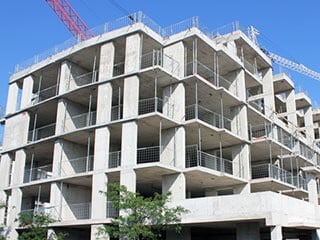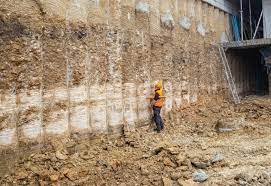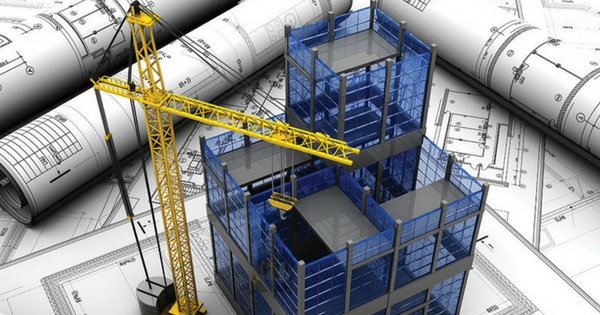
Construction Management I - E
Definition of Project Management is
defined as a discipline related to the process of organizing and managing the
resources available in projects, such as: human resources or physical
resources, in a way that the project can be completed successfully while taking
into account the factors of quality, time and available cost. Project
management elements.
Time: It is considered one of the most
important elements of project management. The completion of the required
projects on time increases customer confidence, in addition to saving a lot of
costly expenses on the company.
Costs: It is meant to control costs
and financial matters in order to increase the production of profit.
Human Resources: One of the most
important elements of project management is to follow up on the work of
employees to evaluate performance and the production process on a regular and
continuous basis.
Tasks: It means following up on the
tasks related to the completion of the project in a timely manner and at the
appropriate cost. All steps of the project must be followed up from the initial
small matters to reaching the final point, and the work may be simple or
complex.
Project management objectives for
the general projects. Reduce costs. Reducing expenses. Finish the project on
time. Completion of the project according to the established budget.
Implementation of all such as: Quality Assurance. Satisfaction of all parties
involved in the project.
Reference
1.Principles of Construction Management (Roy Pilcher)
2.Programming and Scheduling Techniques
(Thomas Euher).2003
3.Project Management (F. Gray and W. Larson) 7th Edition 2018
4.Engineering Economics (R. Panneerselvam) 2012
5.Project Management planning and control (Albert Lester) 2006

Engineering And Numerical Analysis I - E
Engineering analysis is concerned with applying the foundations and processes of scientific analysis to any system, device or technology under study, with the aim of knowing its characteristics and condition. Engineering analysis is based on deconstruction; It separates the engineering design into operating mechanisms or failure mechanisms, then begins to analyze or evaluate the components of each mechanism separately, and then reassembles the components according to the physical foundations and basic natural laws

Irrigation and Drainage Engineering I -E
Irrigation is the agricultural process of applying controlled amounts of water to land to assist in the production of crops, as well as to grow landscape plants and lawns, where it may be known as watering. Agriculture that does not use irrigation but instead relies only on direct rainfall is referred to as rain-fed. Irrigation has been a central feature of agriculture for over 5,000 years and has been developed independently by many cultures across the globe.
Irrigation helps to grow agricultural crops, maintain landscapes, and revegetate disturbed soils in dry areas and during periods of less than average rainfall. Irrigation also has other uses in crop production, including frost protection, suppressing weed growth in grain fields and preventing soil consolidation. Irrigation systems are also used for cooling livestock, dust suppression, disposal of sewage, and in mining. Irrigation is often studied together with drainage, which is the removal of surface and sub-surface water from a given location.
There are various types of irrigation. Micro-irrigation uses less pressure and water flow than overhead irrigation. Drip irrigation trickles out at the root zone.
Drainage is the natural or artificial removal of a surface's water and sub-surface water from an area with excess of water. The internal drainage of most agricultural soils is good enough to prevent severe waterlogging (anaerobic conditions that harm root growth), but many soils need artificial drainage to improve production or to manage water supplies.

Reinforced Concrete I - E
The aim of this course is to provide students with a thorough understanding of the design of reinforced concrete structures. Topics covered will include: behavior and design of beams for flexure, shear and torsion; survivability; load transfer though structural members; design of one way and two way slabs; behavior and design of short and slender columns.

Soil Mechanics I - E
The soil Mechanic course introduces the basic concepts of the mechanics of soils. It covers the fundamental multi-phase nature of soils, provides an understanding of soil description and classification, the effective stress concept, and elementary seepage and compaction problems. Furthermore, solve certain fundamental problems related to consolidation, shear strength, and design of shallow and deep foundations; and familiarizes students with relevant terms and soil tests.
The principles of water flow in soils, settlement, and shear strength of soils will also be discussed. Consolidation problems, factors of safety for foundations, and foundation settlement prediction will also be covered.

Theory of Structures I - E
Theory of Structures is an engineering topic dealing with the structural analysis of structures i.e. the determination of the effects of external loads on the physical behaviour of the structures and the components thereof, through which the internal forces acting on the components of the structures, are calculated so as to be included in the design.
The objective of this course is to acquaint the students with the basic concepts of structural analysis and various methods used in analysing statically determinate and indeterminate structures being considered as Course Learning Outcomes (CLO) enabling the students, upon completing this programme, to analyse statically determinate and indeterminate structures such as Beams, Frames, Arches, Trusses, and Composite Structures, to calculate elastic deformation of aforementioned structures, and to describe the behaviour of the structural elements under the influence of various external loads.

Traffics Engineering I - E
Has
been defined as a phase of transportation engineering
that deals with the safe and
efficient planning, geometric design, and
traffic operations of roads, streets, and highways, their networks, terminals,
abutting lands, and relationships with other motorized and non-motorized modes
of transportation.
1. Highway planning and administration (general)
Principles road network system.
2. Traffic volume studies
Traffic volume count types, techniques, Traffic volume variation, short counts, traffic volume measurements types.
3. Speed
Speed types, definition, measurement of spot speed, determination of average spot speed, speed limit, and design speed.
4. Traffic delay study
Traffic delay types: signalized intersection, en route delay
5. Car parking
Car parking surveys, car parking types, measurements car parking, determination of off-street parking location (moment method)
Road user, Perception procedure intellect in a human mind, factors affecting a driver Physical, psychological, modifying
6. General requirements of vehicle and road
Types of sight distances
Minimum stopping sight distance, min passing sight distance at intersections, the minimum radius of the horizontal curve, speed change lanes lengths.
7. Analysis of basic freeway section (uninterrupted flow) factors affecting capacity, service flow rates, and level of service types